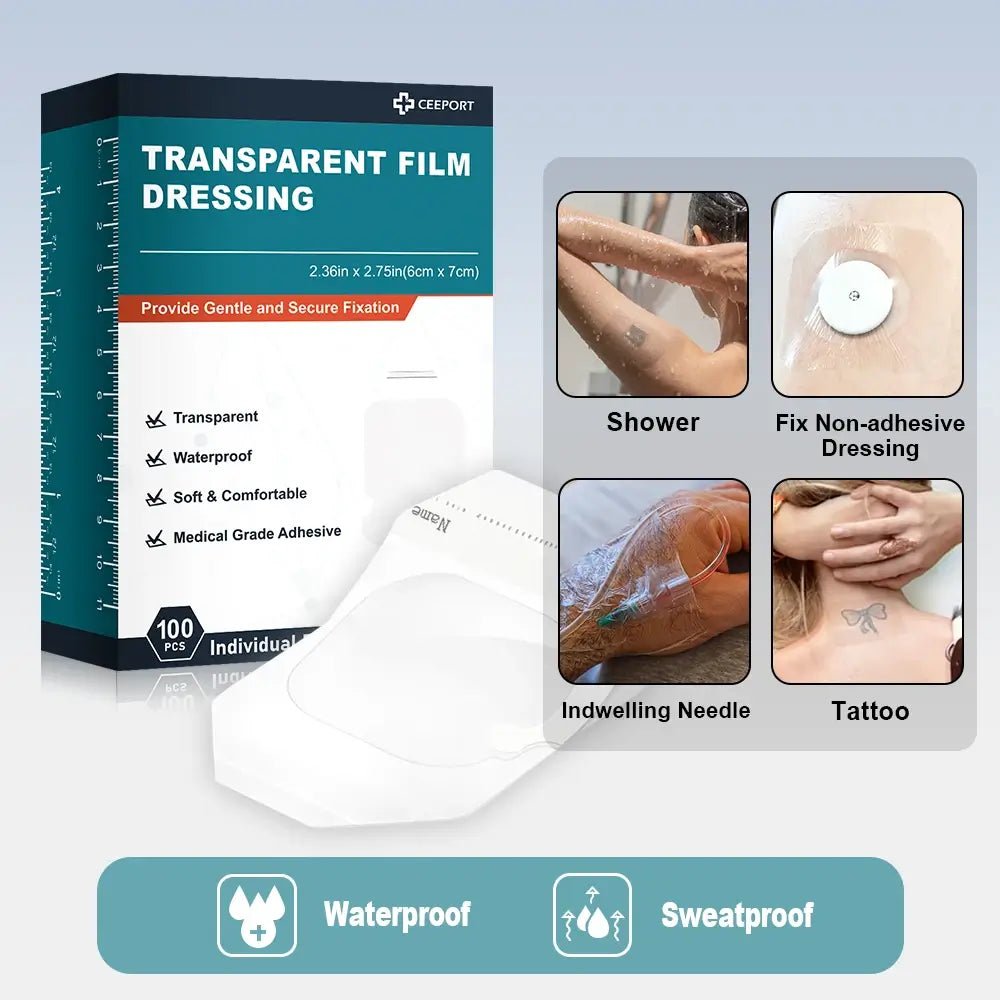
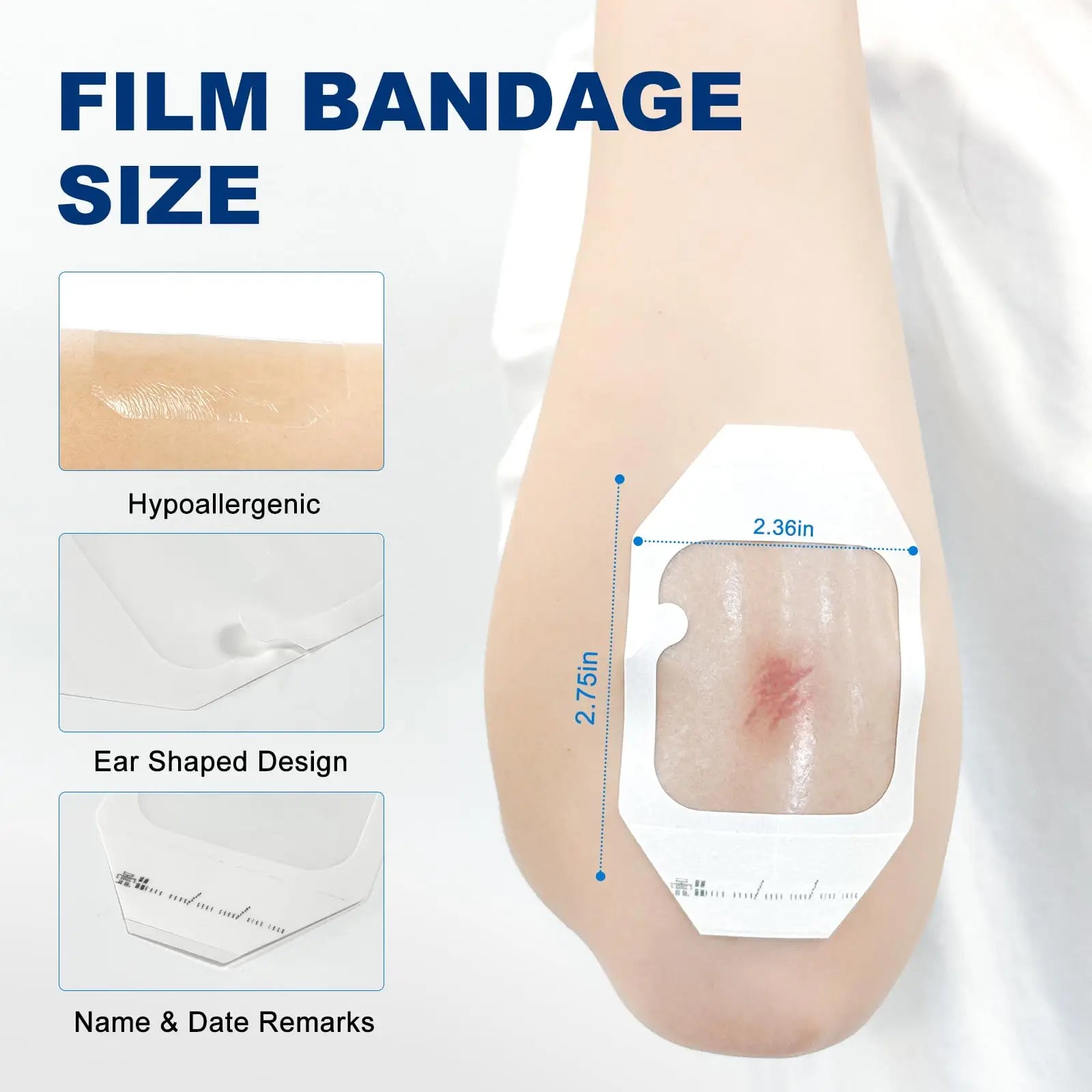


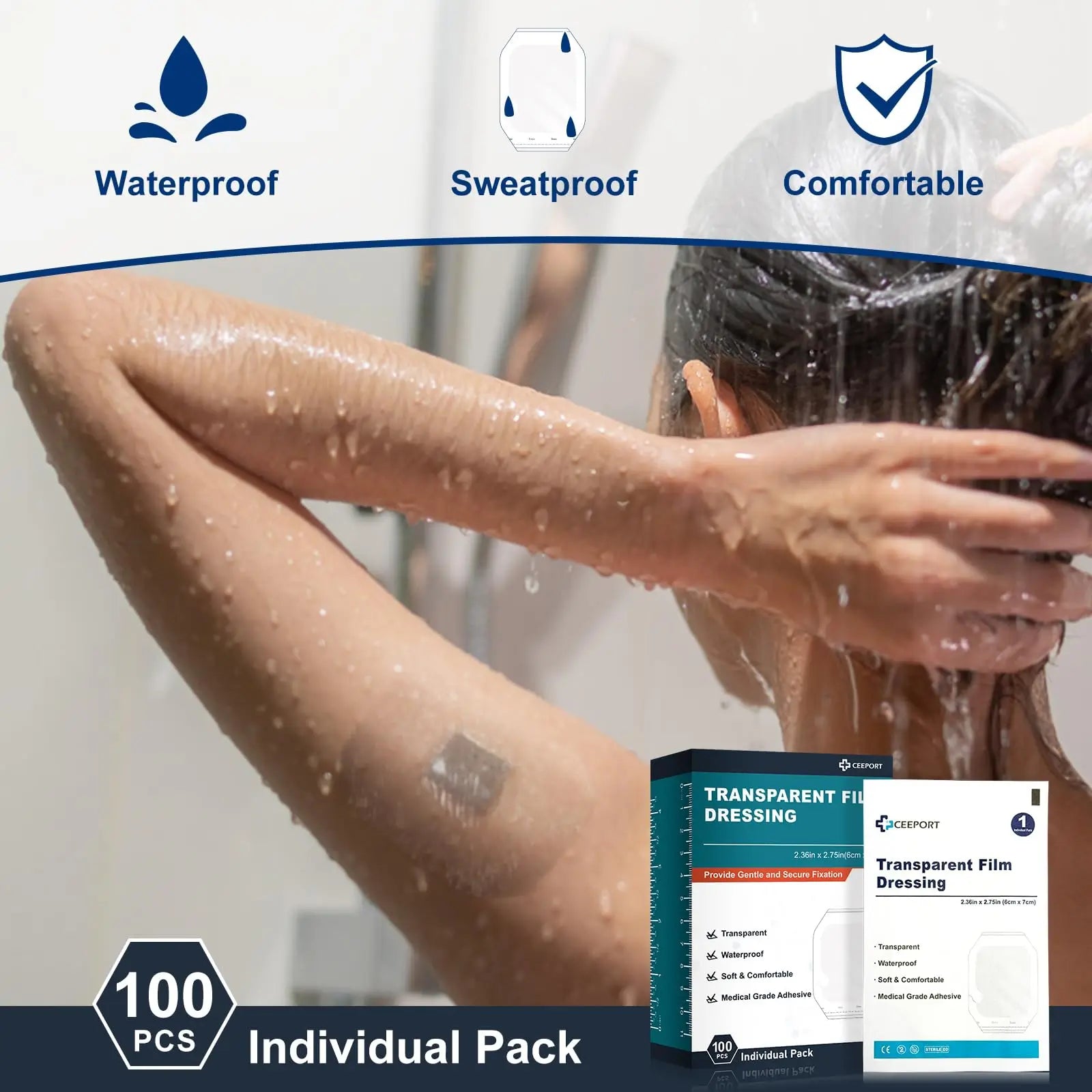
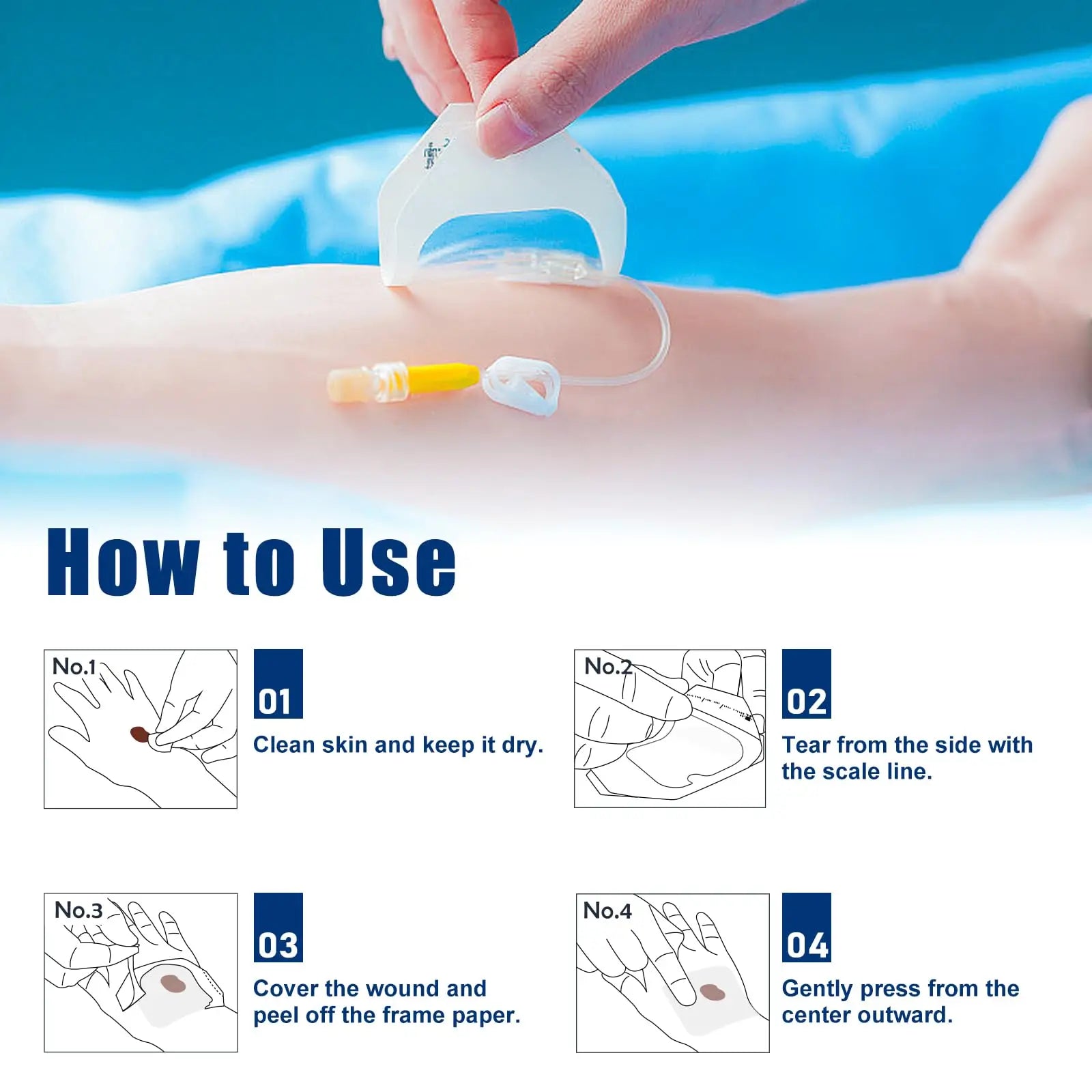
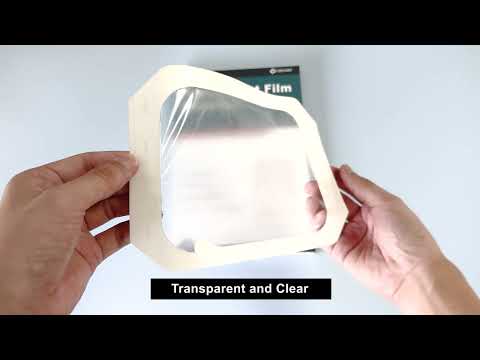
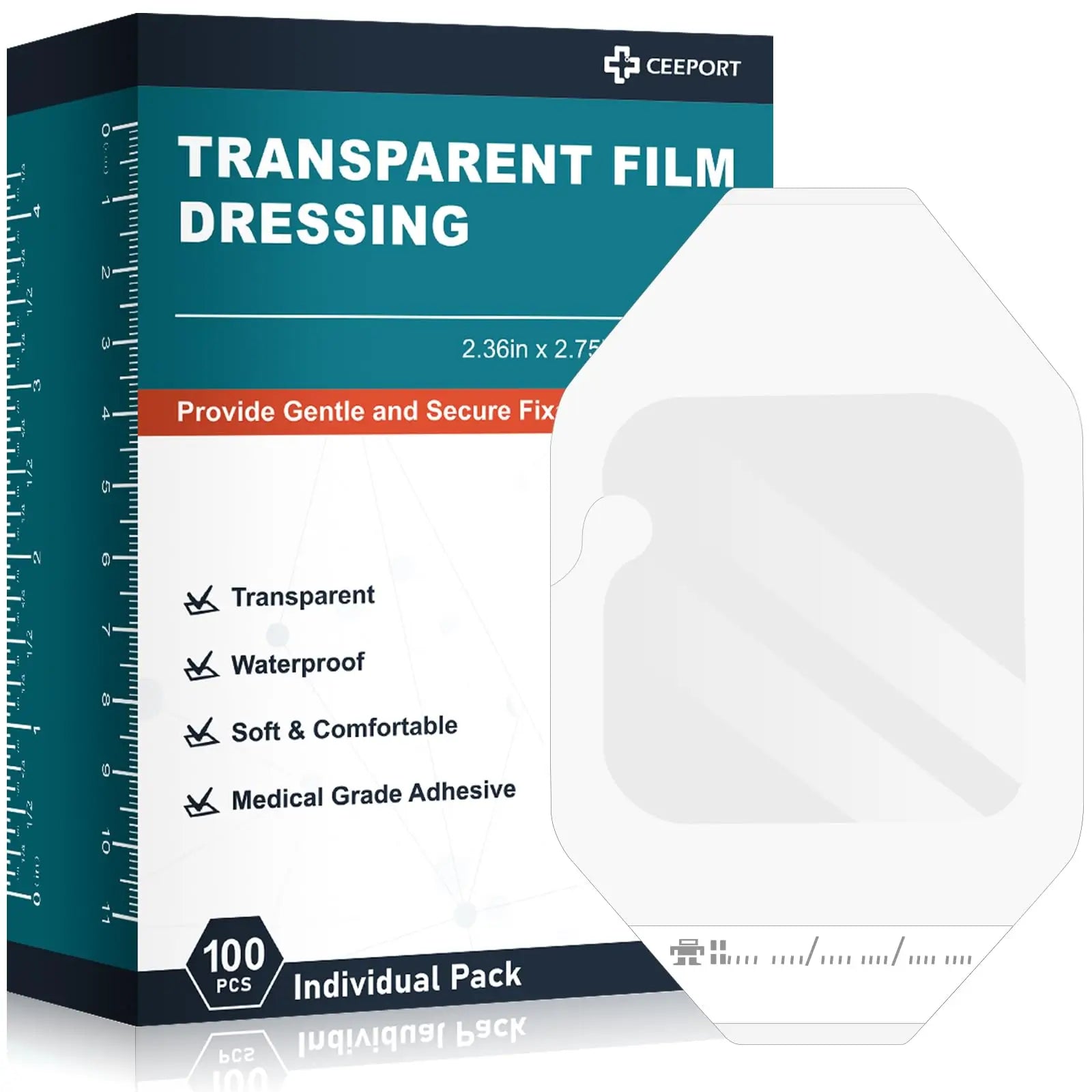
Waterproof Wound Dressings for Effective, Continuous Healing & Infection Protection
Indications
- Partial-thickness wounds.
- Full-thickness wounds(secondary dressing).
- It can be used to secure and protect surface catheters such as indwelling needles and central venous catheters, shielding the exposed puncture sites from contamination and protecting superficial wounds from external pollution.
- Skin tears, lacerations and abrasions and to help prevent skin breakdown caused by friction to epidermis.
Pairs well with
DETAILS
Material
- Glassine paper frame backing
- PU film
- Acrylic adhesive
- Glasine paper release paper
Advantage
- An easy-to-use window frame delivery.
- Easy to remove the over exudates or sweat, which makes it easy to observe the wound.
- Soft, comfortable and hypoallergenic, can be applicable to every part of body.
- Strong viscosity, keep on the wound up to 7 days.
- Transparent dressing applicable for the wrapping and fixing of all kinds of wound.
Cautions
- Not suitable for infected wounds.
- Not suitable for wounds with a lot of exudate.
- Not suitable for wounds with too deep or cavities.

Waterproof Wound DreHealingssings – Reliable Protection for Continuous
Product Overview
Waterproof wound dressings feature a breathable, flexible polyurethane film that provides a sterile, water-resistant barrier. They protect wounds from fluids and contaminants while allowing moisture vapor to pass, promoting optimal healing. Designed for secure adhesion and patient comfort, they are ideal for surgical wounds, acute injuries, and chronic ulcers.

Key Features & Benefits
Breathable Waterproof Barrier:
Prevents water, bacteria, and contaminants from entering the wound while allowing moisture vapor exchange to reduce maceration
Flexible & Conformable:
Thin polyurethane film adapts to body contours for secure adhesion and patient comfort during movement.
Supports Continuous Healing:
Maintains a stable, moist wound environment that accelerates tissue repair and reduces infection risk.
Durable & Long-Lasting:
Withstands daily activities such as showering, swimming, and handwashing without compromising protection.

Instructions for Use: Waterproof Wound Dressings
- Clean and dry the wound area thoroughly before applying the dressing to ensure optimal adhesion and hygiene.
- Remove the protective liner carefully without touching the adhesive side.
- Position the dressing over the wound, ensuring full coverage with a margin extending beyond the wound edges.
- Gently press down the edges to secure the dressing firmly to the surrounding skin, avoiding wrinkles or gaps.
- Replace the dressing as recommended by your healthcare provider or when it becomes loose, damaged, or soiled.
- Avoid excessive stretching during application to maintain the integrity of the waterproof seal.
Ideal Use Cases
- Enjoy waterproof dressings for wounds that let you stay active without worry.
- Secure protection on joints and high‑motion areas.
- Maintain sterile coverage after minor surgeries or dermatology treatments.
- Hike, garden, or kayak while your waterproof dressings for wounds guard your recovery.
Easy to Use

Clean
Clean skin and keep it dry.
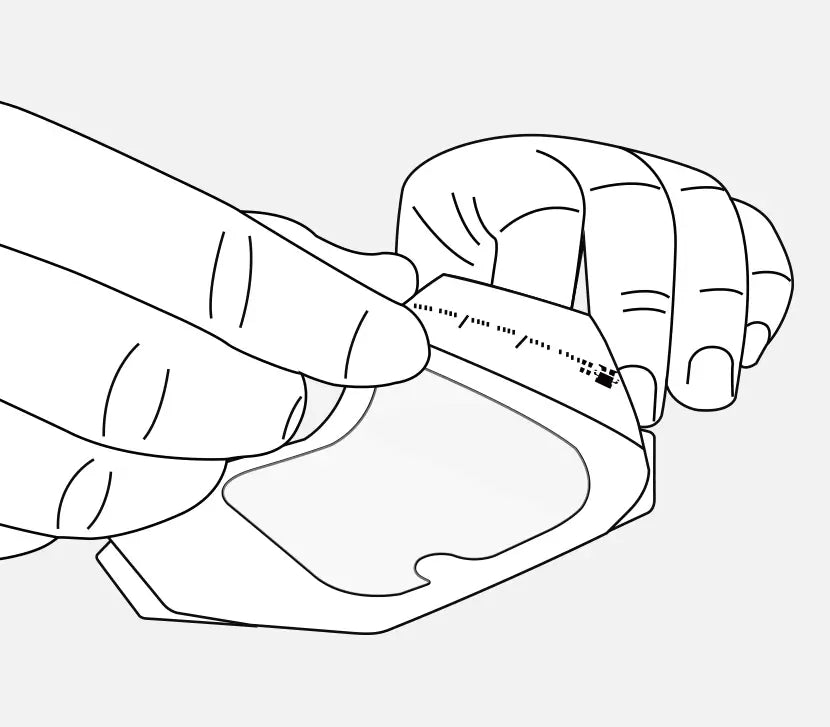
Tear
Tear from the side with the scale line.
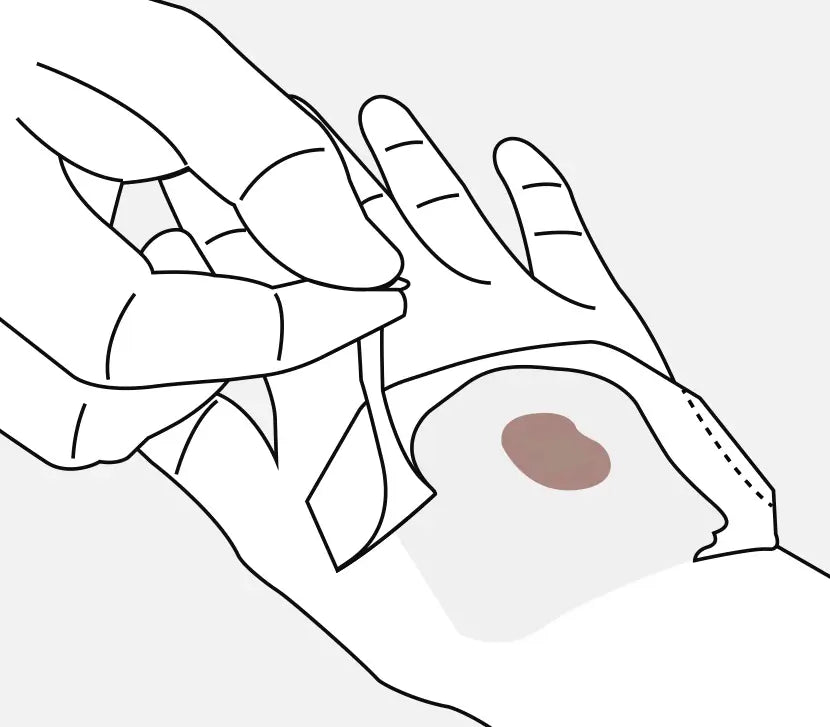
Cover
Cover the wound and peel off the frame paper.

Press
Gently press from the center outward.
You asked, we answered.
What types of wounds is this dressing suitable for?
- First-degree burns
- Superficial wounds and abrasions
- IV or catheter sites
- Healed wounds that need protection
- Secondary dressing to secure gauze or other dressings
- Post-surgical incisions
Is it waterproof?
Yes. Clear film dressings are fully waterproof, allowing patients to shower or bathe without removing the dressing, while still protecting the wound.
Can the dressing be used on infected wounds?
No. Transparent film wound dressings are not recommended for infected or moderate/heavily exuding wounds, as they are occlusive and may trap moisture or bacteria. For infected wounds, use a more absorbent or antimicrobial dressing.
How often should I change transparent medical dressing?
Typically, it can stay in place for up to 5–7 days, depending on the condition of the wound and skin. Change it if it becomes loose, soiled, or if fluid accumulates underneath.
Does it allow the wound to breathe?
Yes. While waterproof, the film is semi-permeable, allowing oxygen and moisture vapor exchange, which supports a moist healing environment and reduces risk of maceration.
Can it be used as a secondary dressing?
Absolutely. Transparent wound dressing are often used to secure other dressings like alginate, foam, or gauze, especially on contoured areas of the body.




